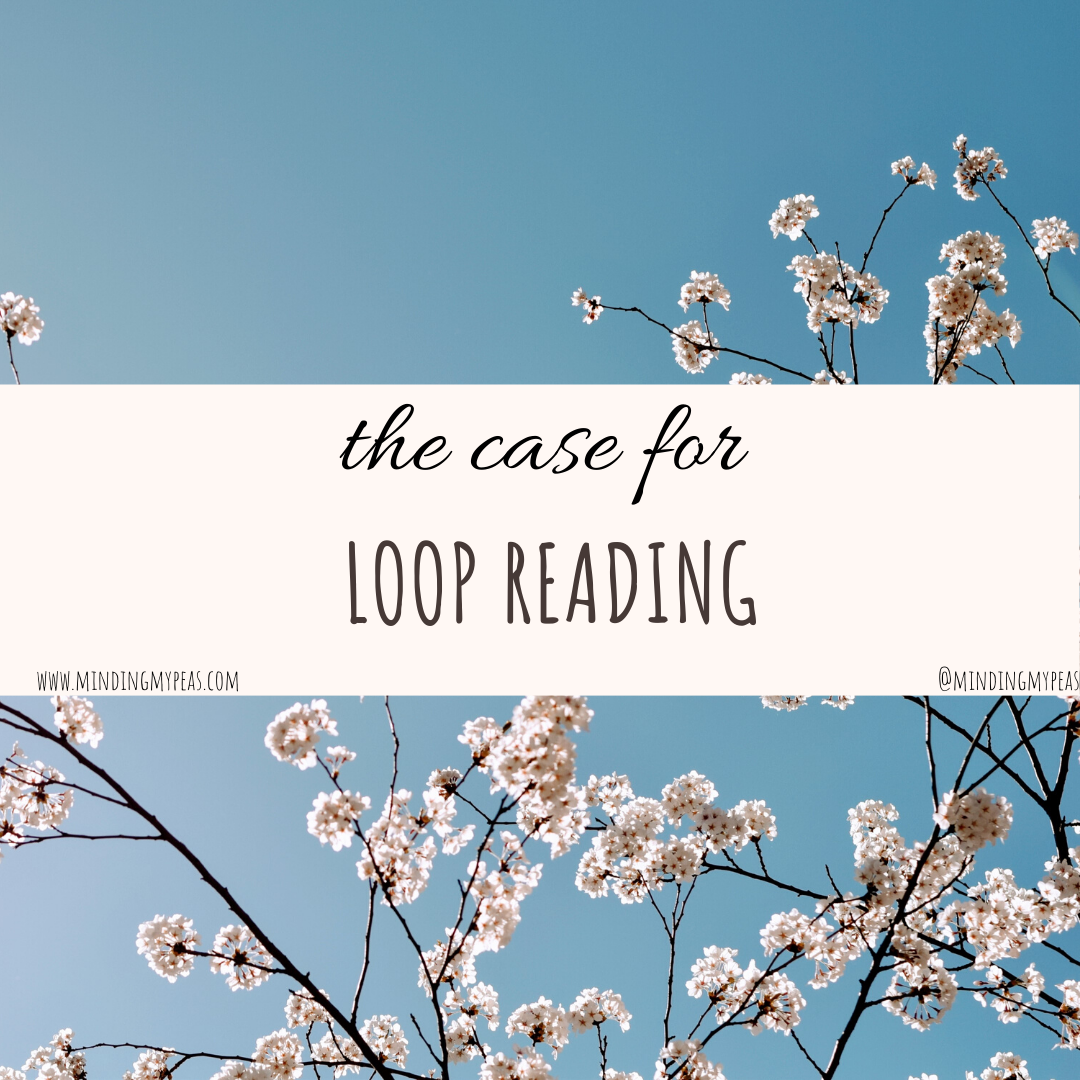The Case for Loop Reading
I read a lot. You might have learned that about me by now 😉 As a home-educating mother, I take my own continuing education seriously. I think it’s important to pursue a variety of subjects that will be mentally stimulating to me personally and help me to be a better teacher. That’s a lot of subjects! At any given time, I’m reading at least 8 nonfiction books, mostly in different subjects. With that many books going at once, it’s easy to get bogged down in one or spend too much time deciding what should be next. Enter the reading loop…
Introduction to Looping
Looping is a fairly common concept among homeschoolers. It basically involves cycling through subjects on an ‘as you finish them’ basis. This commonly includes the “nonessentials” like art, poetry, music study, etc. I know, I know, I flinch at that ‘nonessentials’ too, but the fact remains that if something comes up, there are subjects you’re more inclined to skip over.
This is where the idea of looping comes in. It prevents you from getting stuck in a rut of always missing art, for example, because it’s scheduled to be on Friday, and you have field trips some weeks, doctor appointments other weeks, and somehow, it just always ends up falling to the bottom of the priority list. With a loop schedule, you might miss art on Friday, but you would pick it up on Monday in the loop slot.
“Looping” for reading
I actually don’t need to use looping in our homeschool right now, but I absolutely use it in my own reading life. Here’s how it works. I have about an hour to spend reading before the kids get up and the day gets rolling. That hour is broken up into 15-20 minute segments. I read what I can in that time period, and move on to the next subject. If something (life) happens and I miss a reading period, I just pick up where I left off.
It’s very intuitive and a great way to move through multiple books somewhat simultaneously. It’s also handy to be able to add in extra reading sessions without having to go through a 6-step process to decide what you should read. My afternoon reading time isn’t as consistent, but when I know exactly what is up next, it makes it easy to grab the next thing and do some reading.
Looping eliminates decision fatigue
The biggest reason this works so well for me: it removes the question of what to read next. I love reading, but if I have to think too hard about what I should read next, I a) don’t actually get any reading done, and b) usually end up scrolling through pointless news or social media. If you want to read more widely, make it the easy choice.
James Clear talks about this in his book Atomic Habits (which I highly recommend reading) and says that one of the best ways to to make new habits stick is to make it easy to make the good choice. You don’t want to have to go through a grueling mental debate to decide what you should read. You want to sit down, pick up a book, and read. I really believe looping is the way to do that AND achieve all your wide-reading goals.
What do you think? Have you used looping to work your way through your reading goals?

1 thought on “The Case for Loop Reading”
Love this, Elizabeth! My eclectic reading habits have often caused that “time-wasting” indecision. I don’t have time pressure like you do but my “time left in life” is shorter🥴!